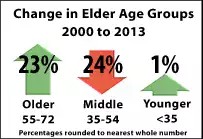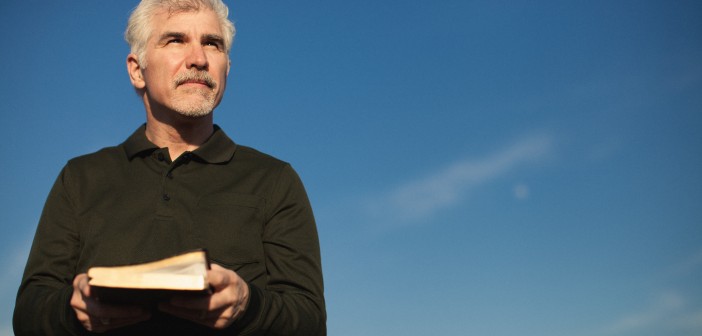The Lewis Center for Church Leadership today released the 2013 version of its annual report on Clergy Age Trends in the United Methodist Church. The report is prepared with assistance from the General Board of Pension and Health Benefits.
United Methodist elders ages 55-72 reached 50 percent for the first time ever in 2010 and continues to grow as a percentage of elders.
Older Clergy Constitute Largest Share of Clergy in History
 As recently as 2000, United Methodist elders ages 55-72 represented only 30 percent of active elders. Previously their percentage of the total was even lower. This age group reached 50 percent for the first time ever in 2010 and continues to grow as a percentage of elders. In 2013, older elders reached a record high proportion of all elders at 54 percent.
As recently as 2000, United Methodist elders ages 55-72 represented only 30 percent of active elders. Previously their percentage of the total was even lower. This age group reached 50 percent for the first time ever in 2010 and continues to grow as a percentage of elders. In 2013, older elders reached a record high proportion of all elders at 54 percent.
This oldest cohort of active elders makes up 59 percent of elders in the Northeastern Jurisdiction and 58 percent in the Western Jurisdiction. The median age of elders remains at 55 in 2013, the highest in history, reached first in 2010. The average age remains at 53, an historic high, and the mode age (the single age most represented) is now 61, also a high.
The Percentage of Middle Age Clergy Continues to Shrink
The percentage of elders aged 35 to 54 continues to shrink, from 65 percent of all active elders in 2000 to 39.81 percent in 2013. In addition, the total number of active elders decreased again in 2013, and all the loss took place in the middle age group, with modest increases in actual numbers for both young and older elders.
The Number of Young Clergy Stays about the Same
There are more young elders, deacons, and local pastors than ten years ago, though the percentage of young elders remains low compared to historical patterns, and the trend line is up modestly but consistently.
For example, there are more young elders than there have been since before 2000, and the percentage of young elders is higher than since before 2000. Young elders as a percentage of all elders stayed in the 4 percent range in the first half of the 2000s and since then have made steady progress in the 5 percent range, moving closer to the 6 percent or higher range last seen in the 1990s.
Much more information is available in the complete Clergy Age Trends report, which is available for download free of charge.
Related Resources:






